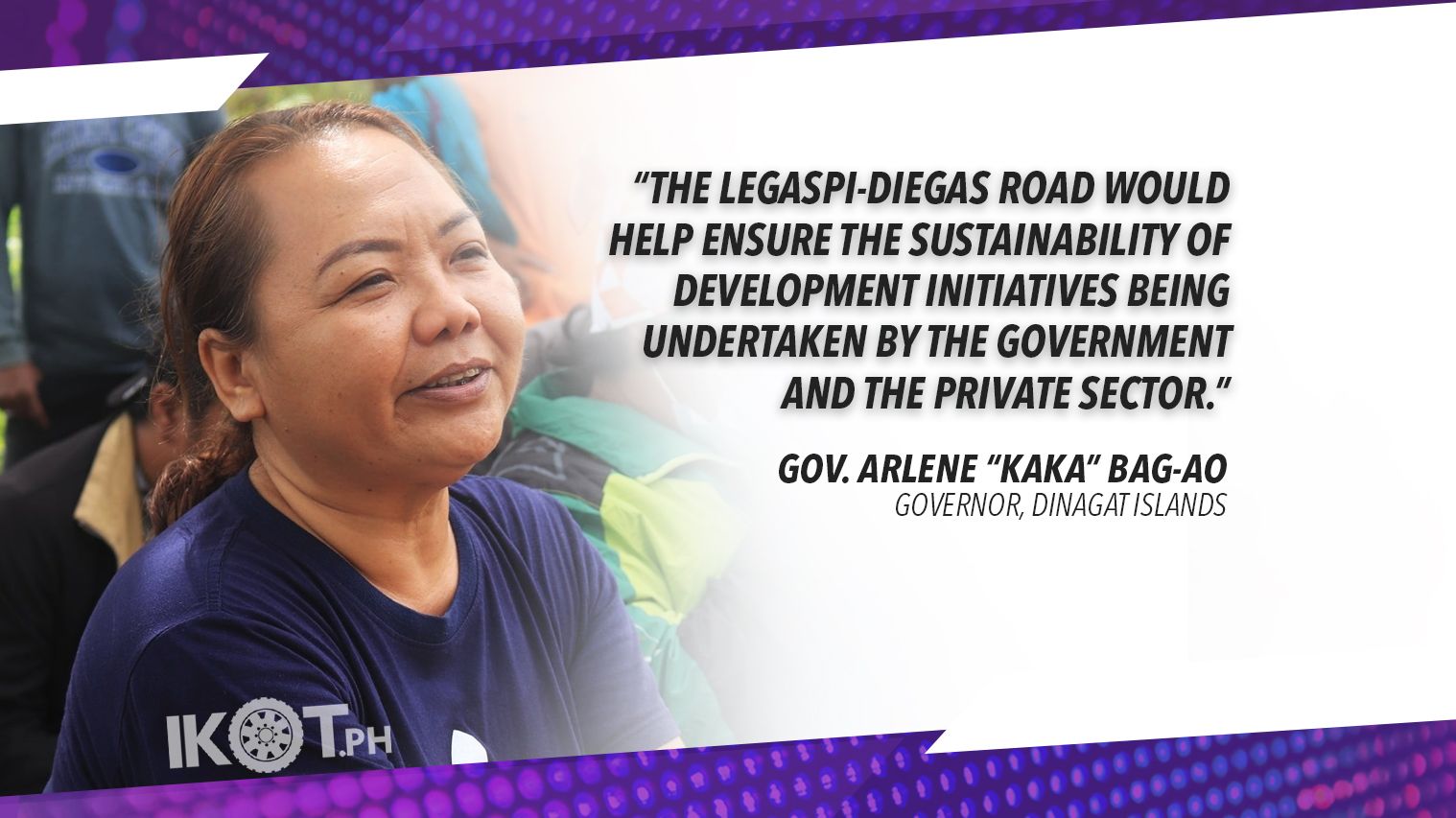Dinagat Islands Governor Arlene ‘Kaka’ Bag-ao has led the unveiling of a 19.2-kilometer access road connecting two coastal municipalities, enabling for the first time land travel for residents who have been relying on the sea as their primary mode of transport.
Bag-ao cited the social and economic benefits of opening up new roads, saying the Legaspi-Diegas Road that connects Cagdianao to Basilisa town and the rest of the province would help ensure the sustainability of development initiatives being undertaken by the government and the private sector.
“I’m grateful to the Cagdianao Mining Corporation (CMC) for its community development visions, for initiating projects aimed at ensuring sustainable progress of its stakeholders,” the lady governor said in the dialect during the recent project turnover.
She was referring to CMC, an affiliate of Nickel Asia Corporation which is operating a nickel mine in Barangay Valencia that initiated the road development project as part of its social responsibility initiative.
Rudilyn Velasco, CMC community relations manager, said the company started the road opening and widening works from Barangay Legaspi in Cagdianao to Barangay Diegas in Basilisa after it secured government permits in early 2017. The road project traverses five barangays in the two municipalities.
Road development works–consisting of opening, widening, compacting, and graveling–amounted to about P12.2 million, sourced from the company’s Social Development and Management Program and Corporate Social Responsibility funds.
Wenefredo Alonsagay, the chairperson of Barangay Legaspi, recalled how it was difficult for fishermen in the coastal village to sell their fish catch and other marine products and more so the harsh conditions experienced by his constituents to access medical services before the road was built.
“For a very long time, we had to transport everything by sea. Fishing, which is the main source of income for our residents, wasn’t really profitable because the longer travel by sea meant we didn’t have sufficient access to buyers,” Alonsagay said in the dialect.
“The new road allows local fishermen to bring their catch to neighboring towns in 20 to 30 minutes, instead of the usual one to two hours by boat.”
According to the barangay official, the new road allows local fishermen to bring their catch to neighboring towns in 20 to 30 minutes, instead of the usual one to two hours by boat.
Engr. Arnilo Milaor, CMC resident mine manager, said the company embarked on the road project after assessing the multiple benefits it would bring to some 2,000 residents in five barangays who are direct beneficiaries of the project.
“This road will propel economic activity amidst this pandemic.”
“This is not just purely a farm-to-market road, but we also envision it to drive various economic and tourism activities in the area,” Milaor said during the project turnover. “This road will propel economic activity amidst this pandemic.”
He said the road would support the livelihood and eco-tourism projects of company-assisted people’s organizations in the area, such as the ice plant, bangus fish cage, and poultry business.
For her part, Bag-ao assured the provincial government’s counterpart in the project, noting that concreting of a nearby road network is currently ongoing.
“We have started the Rita Glenda (road) concreting and if we have to open a farm-to-market road, we need P25 million as initial investment. I’d also like to thank (Basilisa) Mayor Ozzy Reuben Ecleo and (Cagdianao) Mayor Adolfo Longos for helping in our development direction,” she concluded.

